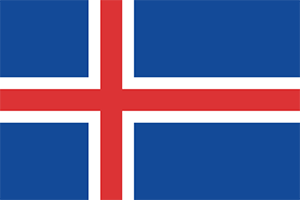Iceland - Country Background Information
- Describing the forms of education in the country
- Identifying an ‘inclusive setting’ in the country
- What an ‘official decision of SEN’ means in the country
- What ‘out-of-education’ means in the country
The EASIE data collection covers all recognised forms of education at ISCED levels 02, 1, 2 and 3.
This means any type of education organised by or approved by any recognised educational provider in the public or private sector: municipality, local or regional educational provider from the public or private sector, working with/for ministries responsible for education and areas such as health, social, welfare, labour, justice, etc.
6–16
What are the typical age ranges for the ISCED levels?
| ISCED LEVEL 02 | ISCED LEVEL 1 | ISCED LEVEL 2 | ISCED LEVEL 3 |
|---|---|---|---|
| 3–5 | 6–12 | 13–15 | 16–19 |
In the EASIE data collection, an inclusive setting is operationally defined as:
A recognised form of education where the child/learner follows education in mainstream classes alongside their peers for the largest part – 80% or more – of the school week.
The 80% time placement benchmark clearly indicates that a child/learner is educated in a mainstream class for the majority of their school week. At the same time, it acknowledges possibilities for small group or one-to-one withdrawal for limited periods of time (i.e. 20% or one day a week).
Very few participating countries can provide exact data on children/learners spending 80% of their time in a mainstream group/class. However, all countries can apply one of three agreed proxies that provide an approximation to this benchmark:
- Placement in a mainstream class implies over 80% or more
- Data is available on the number of hours of support allocated to a child/learner
- Placement in a mainstream class implies over 50% or more.
In the EASIE data collection, the agreed operational definition is:
An official decision leads to a child/learner being recognised as eligible for additional educational support to meet their learning needs.
Countries may have different types of official decision, but for all official decisions:
- There has been some form of educational assessment procedure involving different people. This procedure may involve the child/learner, parents, school-based team members, as well as professionals from multi-disciplinary teams from outside the child’s/learner’s (pre-)school.
- There is some form of legal document (plan/programme, etc.) that describes the support the child/learner is eligible to receive, which is used as the basis for decision-making.
- There is some form of regular review process of the child/learner’s needs, progress and support.
The Law on Pre-Primary, Compulsory (Primary and Lower-Secondary) and Upper-Secondary Education of 2008 and regulations outline the right to additional support for children/learners with special educational needs.
In Iceland, there are four specialised institutions that perform educational assessment:
- Greiningar- og ráðgjafarstöð (State Diagnostic and Counselling Centre)
- Þjónustu- og þekkingarmiðstöð (National Institute for the Blind, Visually Impaired and Deafblind)
- Heyrnar- og talmeinastöð (National Hearing and Speech Institute of Iceland)
- Barna og unglingageðdeild (National University Hospital of Iceland – Children’s Department: Child and Adolescent Psychiatric Department).
In addition, there are psychologists who perform clinical assessment.
The Law on Pre-Primary, Compulsory (Primary and Lower-Secondary) and Upper-Secondary Education of 2008 and regulations outline the right to additional support for children/learners with special educational needs.
The review process is not centralised in Iceland, but is done by experts as needed. This is at school level, municipality level and by the specialised institutions (i.e. State Diagnostic and Counselling Centre; National Institute for the Blind, Visually Impaired and Deafblind; National Hearing and Speech Institute of Iceland; National University Hospital of Iceland – Children’s Department: Child and Adolescent Psychiatric Department). A review is sometimes required after compulsory school, before entering upper-secondary school.
Within the EASIE data collection, specific questions examine children/learners who are out of education. This means children/learners who should, by law, be in some form of recognised education, but who are out of any form of recognised education. A recognised form of education is any type of education organised by or approved by any recognised educational provider in the public or private sector.
